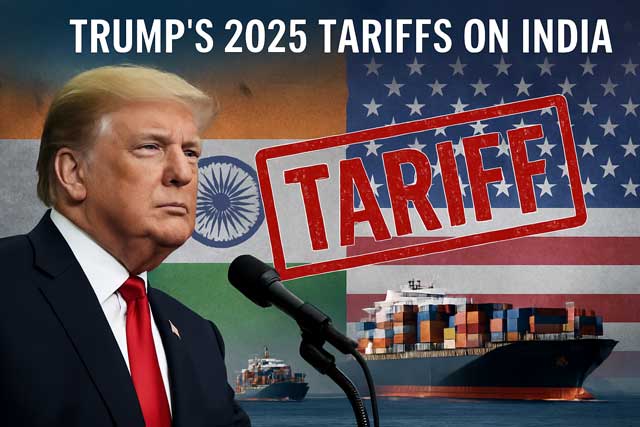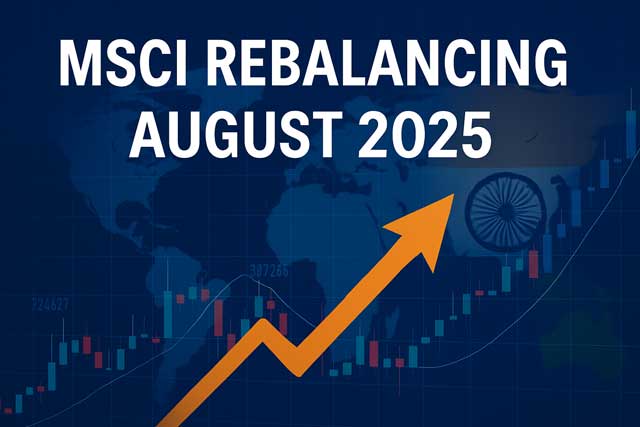Trump Tariffs on India: Impact, Reactions, and What It Means for the Future
In August 2025, the economic relationship between the United States and India took a sudden turn. President Donald Trump, known for his tough trade policies, announced a 25% tariff on Indian imports. This has escalated to 50% on some select goods due to unresolved trade negotiations, placing India’s economy under the microscope.
For businesses, exporters, and even regular consumers, this is no small matter. The decision has sent ripples across the global economy. But what does this mean for India, and how will it impact both countries in the long run? Let’s check out Trump tariffs on India full post.

The Basics: What Are the New Tariffs?
A tariff is essentially a tax imposed on imported goods, making them more expensive. In this case, Trump’s administration has decided to apply a 25% tariff on a wide range of Indian exports. For certain categories of products, such as textiles, gems and jewellery, auto parts, and seafood, the tariff could go up to 50%.
This move is the result of stalled trade talks between the two nations, primarily over issues like India’s continued purchase of Russian oil, something the U.S. has strongly objected to. Additionally, the U.S. has been unhappy with India’s approach to trade tariffs, intellectual property issues, and market access.
The Sectors Hit Hardest
So, which sectors are feeling the heat from these tariffs? Here’s a breakdown:
1. Textiles and Apparel
India is one of the world’s largest exporters of textiles. The U.S. alone takes a large portion of these exports. The new tariffs will directly affect small businesses and workers in the textile sector. For India, this isn’t just an export issue—it’s also about jobs and livelihoods, as millions rely on the textile industry.
2. Gems & Jewellery
India exports a massive quantity of gems and jewellery to the U.S., accounting for billions in trade every year. With a 50% tariff on these items, Indian exporters could face a significant loss. Companies may struggle to stay competitive as the increased cost could turn consumers away.
3. Auto Parts
India’s automotive sector, particularly manufacturers of auto parts, has also been hit hard. India exports a wide range of auto components to the U.S., which are used in vehicles manufactured domestically. These new tariffs will raise production costs, potentially making Indian-made components less attractive to U.S. automakers.
4. Seafood and Leather
The seafood industry, which exports a large quantity of fish to the U.S., especially shrimp, will also feel the sting. A 25% tariff could cut into margins significantly, especially for small-scale exporters who may not have the financial resilience to absorb these costs. Similarly, India’s leather goods industry will face challenges in maintaining its market share.
Immediate Economic Impact on India
The immediate impact of the tariffs may be felt more in certain industries, but the long-term consequences could be broader.
1. Reduced Export Revenue
According to some estimates, India’s export sector could face a loss of up to $64 billion due to the tariffs. While this might seem like a large figure, it’s important to note that India’s total trade with the U.S. stands at over $100 billion annually. So, while a portion of exports will definitely be affected, the broader economy will continue to grow at a steady pace.
2. Effects on Small and Medium Enterprises (SMEs)
For SMEs, the tariffs pose a particularly tough challenge. Larger companies often have the ability to absorb higher costs or shift their focus to other markets. But small businesses, especially in sectors like textiles or auto parts, will face significant pressure. These businesses may either cut back on exports, reduce their workforce, or look for alternative international markets.
3. Strain on the Manufacturing Sector
The manufacturing industry, which has seen a significant push under India’s “Make in India” initiative, could suffer a blow if exports to the U.S. decrease. This is a sector that the government has been trying to grow, and while India is a strong player in certain industries like pharmaceuticals and technology, a tariff on certain products could slow progress.
Broader Implications for the Global Economy
While the Trump Tariffs on India have a direct impact on India, the reverberations can be felt globally. As two of the world’s largest economies, any disruption in U.S.-India trade has a domino effect.
1. Disrupted Global Supply Chains
India plays a significant role in many global supply chains, particularly in the automotive and textile industries. A disruption in Indian exports will ripple through those supply chains, potentially increasing costs for companies worldwide that rely on Indian products. It also means that U.S. consumers may face higher prices for certain products, from clothes to car parts.
2. Increased Trade Tensions
This tariff escalation is just the latest in a series of global trade tensions, with the U.S. already engaged in trade disputes with China and the EU. The U.S.-India relationship has been characterized by cooperation in areas like defense, technology, and regional security. However, these tariffs threaten to sour what has been a relatively stable partnership, especially as the two countries attempt to navigate geopolitical issues.
3. Opportunities for Other Countries
Countries like Vietnam, Mexico, and Bangladesh might see this as an opportunity to increase their market share in the U.S. market. In fact, some of these nations are already positioning themselves to take on the demand that India might lose, which could significantly alter global trade dynamics.
What India Is Doing to Counter the Impact
India’s government and industries are not just sitting back and accepting the tariffs. There’s been a flurry of activity to mitigate the damage.
1. Diplomatic Engagement
India has pushed for dialogue, aiming to reach a trade agreement that can resolve the differences between the two countries. Although the U.S. has shown little interest in negotiating, India remains committed to diplomacy.
2. Expanding Trade with Other Countries
India is looking to diversify its markets by expanding trade with countries in Europe, Asia, and Africa. This strategy, known as “multi-polar trade,” reduces India’s reliance on any single country, thus mitigating the risks posed by U.S. tariffs.
3. Domestic Growth
To further cushion the blow, India is turning inward. The government has ramped up its efforts to promote self-reliance through initiatives like Atmanirbhar Bharat (self-reliant India). This focuses on reducing dependence on foreign goods and boosting domestic production, particularly in critical sectors like electronics, pharmaceuticals, and machinery.
The Road Ahead: What’s Next for U.S.-India Trade?
As we look ahead, it’s clear that the Trump tariffs on India are just one chapter in the ongoing trade saga. While the immediate effects are unsettling, both India and the U.S. understand that they are too intertwined economically to allow a full-blown trade war.
The key questions moving forward are:
Can India successfully diversify its trade relations to buffer the impact?
Will the U.S. soften its stance under a future administration?
How long will it take for the two countries to reset their trade relations and come to a mutually beneficial agreement?
India will have to navigate these waters carefully, balancing its global aspirations with domestic economic needs. For consumers, businesses, and policymakers alike, staying informed and adaptable will be crucial in the coming months.
Conclusion
The Trump tariffs on India represent a major bump in the road for an otherwise promising trade relationship. While challenges are inevitable, India’s ability to adapt, diversify, and leverage diplomacy will be key to minimizing the damage. And as always, the resilience of India’s economy will be tested—yet it has shown time and again that it can bounce back from adversity.

